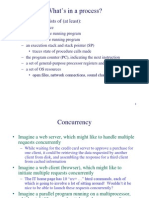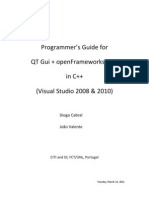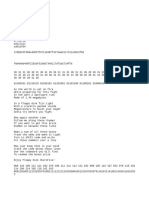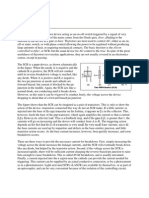0% found this document useful (0 votes)
412 views78 pagesDevDays2007 - QT - Concurrent
This document provides an overview of Qt Concurrent, a framework for parallel programming in Qt. It discusses using Qt Concurrent to run functions asynchronously using threads from a thread pool. It also describes how to scale tasks across multiple CPU cores using APIs like map(), mapped(), and mappedReduced() to parallelize work on containers of data. The document outlines the asynchronous and parallel aspects of Qt Concurrent and how QFuture and QFutureWatcher can be used for synchronization and receiving notifications.
Uploaded by
Milan BjekicCopyright
© Attribution Non-Commercial (BY-NC)
We take content rights seriously. If you suspect this is your content, claim it here.
Available Formats
Download as PDF, TXT or read online on Scribd
0% found this document useful (0 votes)
412 views78 pagesDevDays2007 - QT - Concurrent
This document provides an overview of Qt Concurrent, a framework for parallel programming in Qt. It discusses using Qt Concurrent to run functions asynchronously using threads from a thread pool. It also describes how to scale tasks across multiple CPU cores using APIs like map(), mapped(), and mappedReduced() to parallelize work on containers of data. The document outlines the asynchronous and parallel aspects of Qt Concurrent and how QFuture and QFutureWatcher can be used for synchronization and receiving notifications.
Uploaded by
Milan BjekicCopyright
© Attribution Non-Commercial (BY-NC)
We take content rights seriously. If you suspect this is your content, claim it here.
Available Formats
Download as PDF, TXT or read online on Scribd
/ 78



















































































